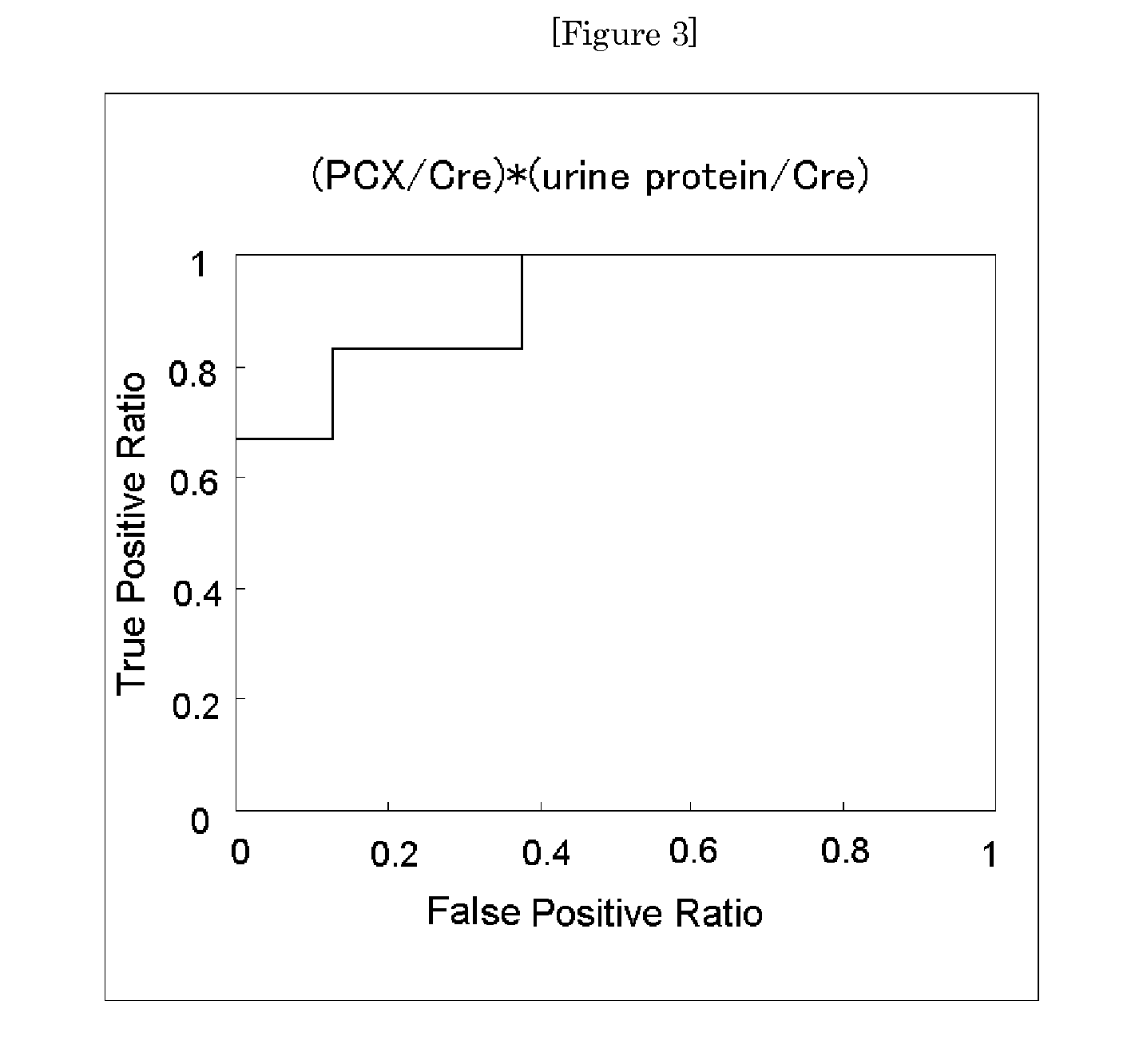Test method on renal diseases
a test method and kidney disease technology, applied in the field of renal disease test methods, can solve the problems of renal failure, renal failure, renal failure, etc., and achieve the effect of reducing physical and social burdens on subjects and effective assessment of renal diseases
- Summary
- Abstract
- Description
- Claims
- Application Information
AI Technical Summary
Benefits of technology
Problems solved by technology
Method used
Image
Examples
example 1
Measurement of Urinary Podocalyxin Concentration
[0055]A podocalyxin concentration was measured using two kinds of anti-human podocalyxin monoclonal antibodies. Those two kinds of antibodies recognize different two epitopes of human podocalyxin, respectively, and are an anti-human podocalyxin monoclonal antibody a (hereinafter, simply referred to as “antibody a”) and an anti-human podocalyxin monoclonal antibody b (hereinafter, simply referred to as “antibody b”), respectively. In this example, an antibody a-coated microtiter plate (split type micro plate GF8 high: Nunc) and a horseradish peroxidase (hereinafter, abbreviated as “HRP”)-labeled antibody b were used.
[0056]First, 90 μL of primitive urine obtained from a subject were mixed with 10 μL of a solution of 2 M TES-NaOH, 0.2 M EDTA, and 2% (Vol. / Vol.) Triton X-100, pH 7.0. 100 μL of a urine sample solution obtained by the mixing were added to wells of an antibody a-coated microtiter plate. The plate was left to stand still at 37...
example 2
Clinical Significance of Urinary Podocalyxin Excretion Rate as Prognostic Screening for IgA Nephropathy
[0057]Urine specimens obtained from 28 patients with IgA nephropathy were each calculated for its urinary podocalyxin excretion rate (PCX / Cre) by the method of Example 1. Further, the same urine specimens were each measured and calculated for its estimated glomerular filtration rate (eGFR) and urine protein excretion rate (urine protein / Cre). Those rates were combined with the urinary podocalyxin excretion rate to obtain an index value, and the significance of the index value as a prognostic screening marker was examined.
[0058]The 28 patients with IgA nephropathy were subjected to renal biopsy and broadly classified into two groups, i.e., a group (Group A) including a good prognosis group and a relatively good prognosis group and a group (Group B) including a relatively poor prognosis group and a poor prognosis group in accordance with prognostic classification based on histologica...
PUM
 Login to View More
Login to View More Abstract
Description
Claims
Application Information
 Login to View More
Login to View More - R&D
- Intellectual Property
- Life Sciences
- Materials
- Tech Scout
- Unparalleled Data Quality
- Higher Quality Content
- 60% Fewer Hallucinations
Browse by: Latest US Patents, China's latest patents, Technical Efficacy Thesaurus, Application Domain, Technology Topic, Popular Technical Reports.
© 2025 PatSnap. All rights reserved.Legal|Privacy policy|Modern Slavery Act Transparency Statement|Sitemap|About US| Contact US: help@patsnap.com



